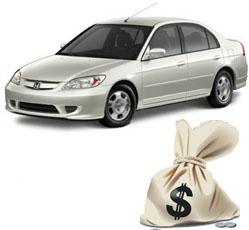Whether buying a new car for the first time or upgrading a smaller vehicle to a larger one as the family grows, finding the right way to finance that new purchase can be tricky. A variety of factors go into choosing the right method and the best option depends on each individual’s situation. There are advantages to each one but they should be measured against potential problems that could arise.
Car loan
The traditional method of paying for a new car is to get a car loan either through the dealer’s financing agent or a bank.
Advantages – A car loan may be the best way to go if the vehicle is going to be kept for several years. The monthly payments will remain constant throughout the life of the loan. Its terms can be negotiated and there’s so much competition these days, especially from online sources, the consumer is in the driver’s seat if they are willing to put in the work to shop around. If possible, try to get a loan for no more than three years in order to reduce interest paid. New cars depreciate rapidly within the first two or three years so it’s better to limit the amount paid after that time.
Disadvantages – Many dealers offer astoundingly low interest rates if the loan is taken out through them, but these usually only apply to consumers with near-perfect credit scores. Rates will increase if credit scores are not as high. Securing a loan will also require putting some money down, usually 10 percent, so if money is tight this may not be an option.
Home equity line of credit
Using the equity built up in a house is another option for buying a car.
Advantages – The line of credit (known as a HELOC) is essentially a pot of money from which the account holder can draw for just about any expense they want. Using a line of credit to pay for a new car means not having to get approved ahead of time or worrying about credit scores. Interest rates are often lower than those for auto loans.
Disadvantages – With a car loan, if payments can’t be made the vehicle is repossessed. If payments on a HELOCare missed, it’s the home that gets taken away.
Credit card
It is possible to use a credit card to purchase a new vehicle, though it might be the least desirable option.
Advantages – No need to be pre-approved or check credit scores. As long as the card limit will cover the purchase price, the card will work fine to purchase.
Disadvantages – Interest rates will often be higher and variable, meaning payments could change from month to month.
Purchasing a new car is a major expense and one that should not be taken lightly, especially given the condition of the economy in the last couple of years. Finding the right way to pay for it is nearly as important a decision as which model.
Guest author Katherine Watkins writes for a website that has a helpful home equity loans calculator to enable visitors to calculate how much they could borrow and what it will cost them. She thinks it’s crucial for drivers to research the best way to pay for a new car before taking on more debt.

No comments:
Post a Comment